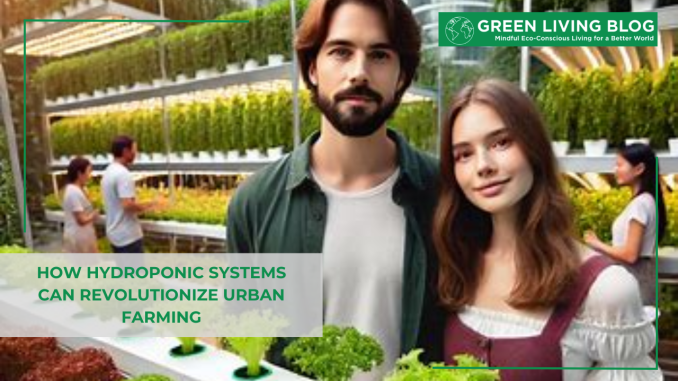
As urbanization advances and tracts of land for traditional farming decrease, hydroponic systems are quite innovative. They are also referred to as ‘soil-less’ farming systems. They are revolutionizing the process of growing foods fit for cities because they go in conjunction with sustainable agriculture producing fresh foods using minimum inputs.
Among the many farming techniques, some include the How EBB and Flow hydroponic systems, which are movable and perfect for use, especially for urban farmers. But what is hydroponics how do systems work, and what makes them ideal for the urban market? Let’s dive in.
What Are Hydroponic Systems?
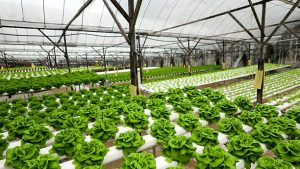
Hydroponics refers to farming techniques where plants are grown without soil or any type of earth substance. Automated hydroponics system setup is at the forefront of this transformation, combining efficiency with cutting-edge technology to enable fresh, locally-grown produce in urban environments. Rather, nutrient delivery is made directly at the root base via water solutions, usually in the soil surrounding the plant. This approach has the advantage of sparing space and freeing itself from many problems of traditional farming, including soil erosion and pests.
Such systems include NFT or Nutrient Film Technique, Deep Water Culture, and EBB and Flow hydroponics systems. All the methods have their rationale for application in crop production, but all are aimed at the optimality of resource utilization in the production of crops.
Why Hydroponic Solutions are Vital to Urban Farming
Some of the constraints to urban farming include availability of space, population density, and environmental issues. It overcomes these problems by enabling farmers to plant crops in a vertical orientation, water requirement is low and can be held indoors or on rooftops.
Combined with high temperatures, high levels of sodium, and foodborne illness, which fresh produce commonly undergoes before arriving in urban centers; hydroponics offers a local option.
Here are the advantages of promoting local farming among urban farmers; local farming reduces CO2 emissions due to the short distances that food has to travel before it gets to the consumer’s table; hence fresher foods are produced.
EBB and Flow Hydroponics System & Its Uses
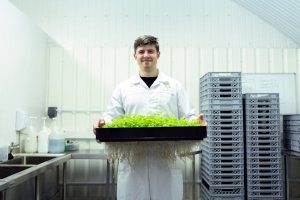
Based on floods and drains, or scour and fill, the EBB and Flow hydroponics system is ideal for urban farming. Systems include flooding a grow tray with nutrient-enhanced water to the plant growth media’s surface and letting the water drain back into the reservoir. That cycle is useful because it brings nutrients and oxygen to the plants and helps avoid over-watering them.
One of the major strengths of the EBB and Flow system is its relative flexibility. The bed type can support many kinds of crops, including leafy greens and tomatoes, and is thus suitable for use by urban growers wanting to gain the most from their space. On top of this, new users can easily experiment with it due to comparatively low levels of complexity of configuration and maintenance.
Advantages of Hydroponic Systems in Urban Settings
1. Space Efficiency
Some methods that may be served under hydroponic systems include vertical farming, whereby farmers grow more plants in a small area. This is especially so in developing economies where land for investment in such projects is hard to come by in the urban centers given the current ever-rising demand.
2. Water Conservation
A hydroponic farming system uses 90% less water compared to conventional farming methods. The water treatment in the system operates in a closed loop, making it ideal for cities struggling with water access.
3. Year-Round Farming
Because hydroponics systems can be installed inside, farmers can cultivate crops all year round throughout the seasons. This makes sure that the food to be served is fresh all the time to meet the intended purposes.
4. Pest and Disease Control
Gardening without soil helps reduce soil diseases, control pests, and minimize the use of chemicals.
5. Higher Yields
Hydroponic systems have been seen worldwide as providing systems that offer a controlled environment and direct nutrient delivery that yield more crops than conventional farming.
Understanding the hydroponics technique by looking at some of the most widely grown crops.
In hydroponics, urban farmers can cultivate almost all the crops. Some of the most popular choices include:
- Leafy Greens: Lettuce, spinach, and kale are some hydroponic system vegetables.
- Herbs: All these herbs, including basil, mint, and cilantro, are very easy to cultivate and yet in great demand.
- Fruits: guess all fruits very well in the EBB and Flow system, especially strawberries and tomatoes.
- Microgreens: Ideal for the increasing small-scale farms in our urban cities, these nutrient-dense greens.
Hydroponics in urban agriculture faces various challenges and the following article outlines how hydroponics can overcome those challenges.
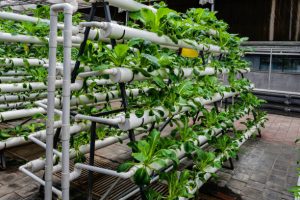
Hydroponics has many benefits; however, it also has its drawbacks, of course. Some challenges include high initial costs to establish the equipment, the equipment’s dependency on electricity, and technical expertise. However, some new hydroponic systems or new systems such as solar systems for powering hydroponics and economical kits for hydroponic systems, are now available.
They can also make use of community-supported agriculture (CSA) that involves consumers paying for the farm and being paid for vegetables and other produce. Not only does this reduce costs, but it also creates a base of constantly returning customers.
How EBB and Flow Systems Differ from Other Hydroponic Systems
Among the most known NFT and Deep Water Culture systems are noteworthy, but EBB and Flow hydroponics systems are versatile. Another advantage of EBB and Flow systems is that CIP systems can endure power outages better than those used in NFT systems since the CIP systems work in cycles. Further, they can cultivate bigger plants of which certain crops need more space to provide adequate anchorage for their root systems.
Hydroponics’ Application for Urban Agriculture
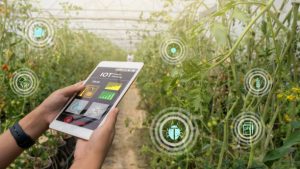
Hydroponics is being driven further by advancements in technology with the systems becoming even smarter. Computerized feeding, computerized monitoring, and energy-efficient lighting make urban farming an advanced growth sector.
Hydroponics too is beginning to be seen in its potential by governments and private organizations. People can receive funding from grants, subsidies, and educational programs to develop this revolutionary farming system.
Conclusion
Hydroponics is revolutionizing the world of vertical farming, making it easy for cities to produce food due to its efficiency. In the abovementioned methods, EBB and Flow hydroponics systems are prominently used because of their usefulness and ease of operation and are quite suitable for use in urban areas.
Hydroponics is an opportunity to diversify the structure of cities, minimize destructive impacts on traditional agriculture, and offer healthier products to consumers. A revolution has already taken root in the industry as farming is now carried out without soil.
![]()
Author Profile
- Passionate content creator, contributor, freelance writer and content marketing allrounder.
Latest entries
 Green LivingDecember 18, 2025Self-Service Hydration: Should You Choose Mains-Fed or Bottled Water?
Green LivingDecember 18, 2025Self-Service Hydration: Should You Choose Mains-Fed or Bottled Water? DictionaryDecember 16, 2025UK Eco Christmas Gifting Trends 2025: Expensive Presents or Sustainable Experiences?
DictionaryDecember 16, 2025UK Eco Christmas Gifting Trends 2025: Expensive Presents or Sustainable Experiences? Green Home GuidesDecember 10, 2025How Windows and Doors Can Cut Your Energy Bills and Help the Planet
Green Home GuidesDecember 10, 2025How Windows and Doors Can Cut Your Energy Bills and Help the Planet EnvironmentNovember 18, 2025What Are Ecological Surveys? Definition, Purpose, and Process
EnvironmentNovember 18, 2025What Are Ecological Surveys? Definition, Purpose, and Process






Leave a Reply
You must be logged in to post a comment.